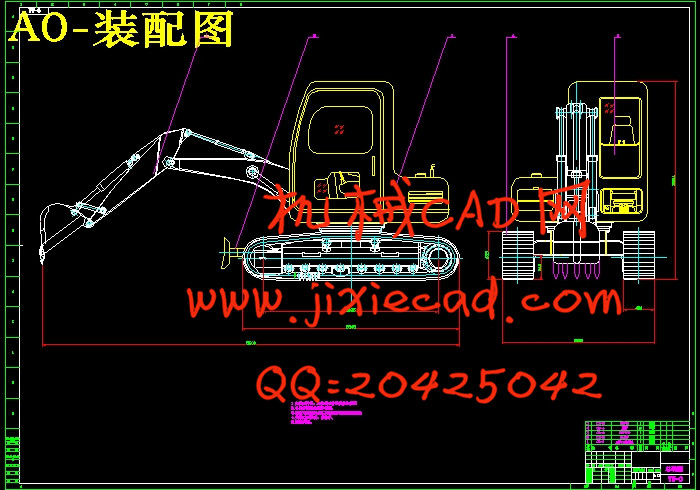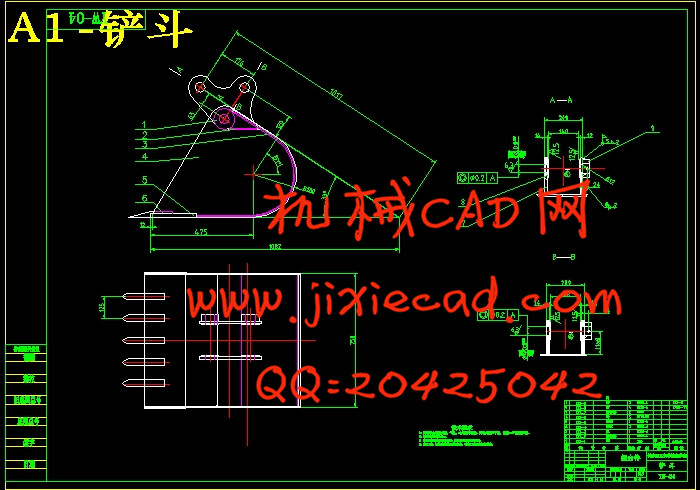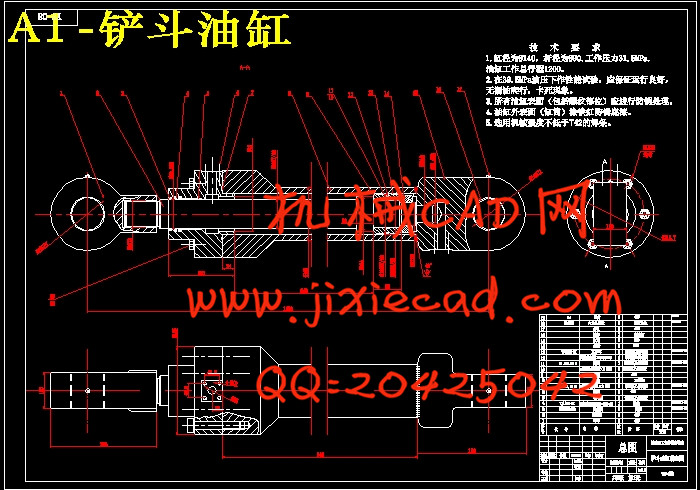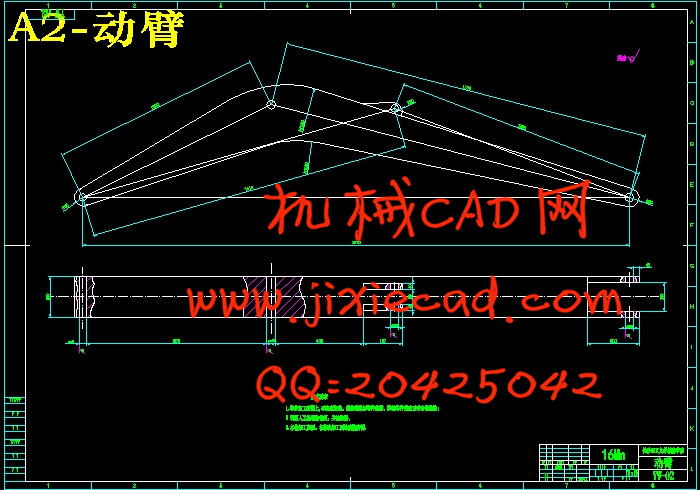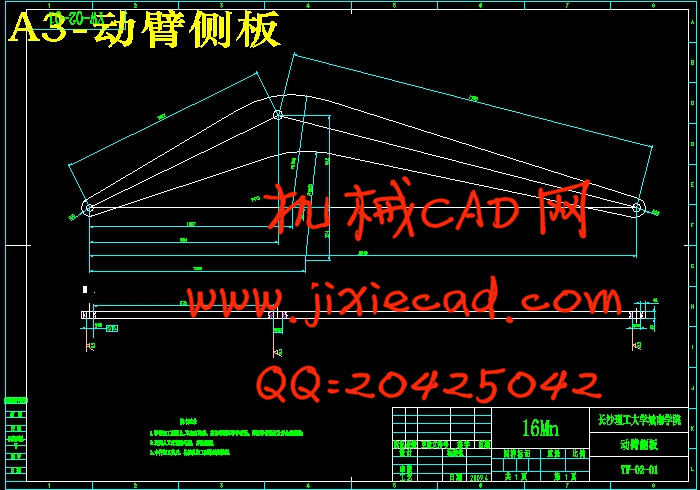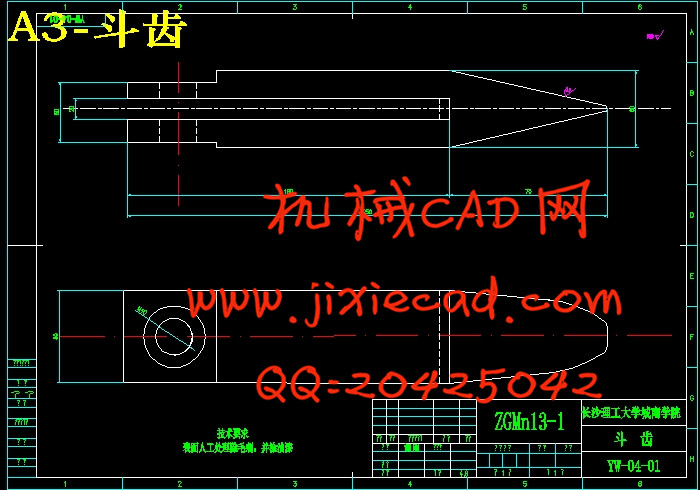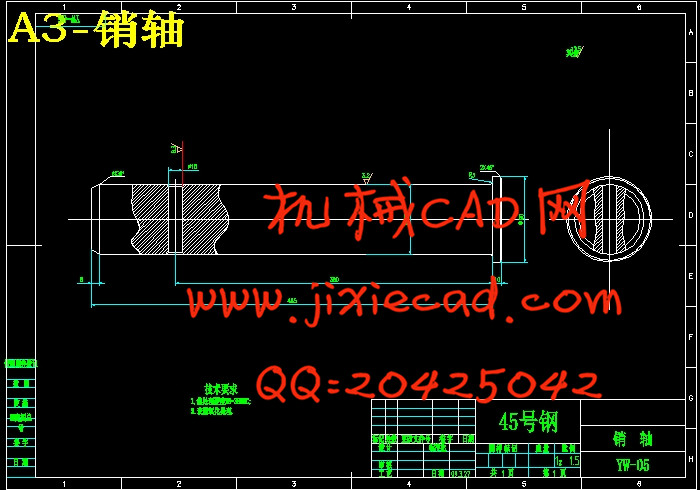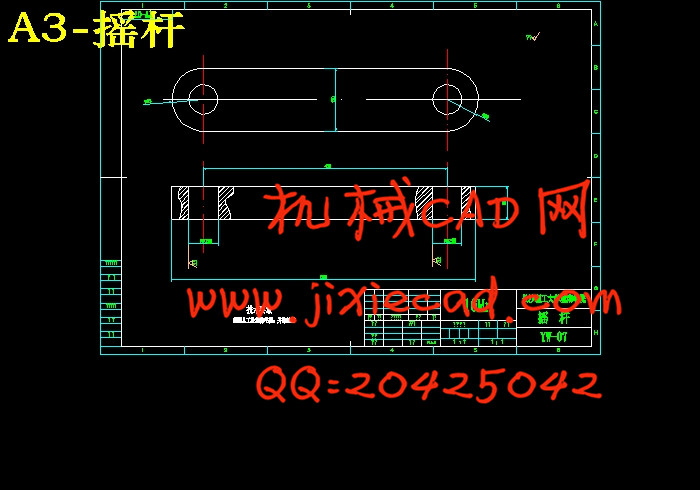设计简介
小型液压挖掘机设计(工作装置设计)
摘要
20世纪八九十年代以来,小型工程机械在市政工程、交通等施工中发挥了较大优势并得以迅速发展。小型挖掘机在这些工程中为节省人力、物力做出了较大贡献,满足了城市各种作业要求,在城市狭窄的工作空间内能够最大限度地发挥其生产能力,逐步成为城市施工中具有代表性的施工机械。小型挖掘机体积小、机动灵活,非常适用于城镇的各种管道开挖、基础施工 、公用事业以及房屋维修等作业。小型挖掘机紧凑的体积、特殊的设计使其能够在
大型挖掘机无法施工的环境中进行作业。本次的主要目的是熟悉机械设计的一般过程,提高理论知识和实践知识的综合运用能力。挖掘机是一种重要的工程机械,它的广泛应用对于减轻劳动量,保证工程质量,加快工程进度,提高劳动生产率起了巨大的作用。反铲工作装置由动臂,斗杆,动臂液压缸,斗杆液压缸和铲斗液压缸组成。
关键词:小型液压挖掘机,液压,工作装置,设计
小型液压挖掘机设计(工作装置设计)
摘要
20世纪八九十年代以来,小型工程机械在市政工程、交通等施工中发挥了较大优势并得以迅速发展。小型挖掘机在这些工程中为节省人力、物力做出了较大贡献,满足了城市各种作业要求,在城市狭窄的工作空间内能够最大限度地发挥其生产能力,逐步成为城市施工中具有代表性的施工机械。小型挖掘机体积小、机动灵活,非常适用于城镇的各种管道开挖、基础施工 、公用事业以及房屋维修等作业。小型挖掘机紧凑的体积、特殊的设计使其能够在
大型挖掘机无法施工的环境中进行作业。本次的主要目的是熟悉机械设计的一般过程,提高理论知识和实践知识的综合运用能力。挖掘机是一种重要的工程机械,它的广泛应用对于减轻劳动量,保证工程质量,加快工程进度,提高劳动生产率起了巨大的作用。反铲工作装置由动臂,斗杆,动臂液压缸,斗杆液压缸和铲斗液压缸组成。
关键词:小型液压挖掘机,液压,工作装置,设计
小型液压挖掘机设计(工作装置设计)
Abstract
Since the 20th century , sma ll and med ium-sized construction machiner y in the municipa l engineer ing, transportation and other construction pla y a large and rapid development . Mini-exca vator which is in these projects in ordered to save ma npower and materia led to make a greater contribution for the city to meet various operationa l requirements, in a city within a narrow working space to ma ximize its production capacity to gradua lly become the city with the construction of construction machinery. Small excavators have sma ll size and flexible, It is very applicable to the various channels of urban excavation, foundation construction, utilities and housing ma intena nce operation. The size of sma ll compact excavators, specia l design to enable it to in large excavators can not carry out construction work environment. The ma in purpose of the design project for graduation is to be familia r with the genera l process of mecha nical design and to enhance the comprehensive capacity of using theoretica l and practica l knowledge. Excavator is an important engineer ing machinery. Its wide applica tion plays a tremendous role to reducs the volume of labor and to ensurs project quality and to accelera ts progress and to increas es productivity. Backhoe working devices is made up of a moving arm and a fighting pole and shovel and a hydraulic tank of moving arm and a hydraulic tank of fighting pole and a hydraulic tank of shovel.
Key words:Sma ll hydraulic excavator Hydraulic Working device Design
5.5 本章小结 ……………………………………………………………………………37
第六章 设计总结 …………………………………………………………………………38
参考文献 ……………………………………………………………………………………39
致 谢…………………………………………………………………………………………40
Since the 20th century , sma ll and med ium-sized construction machiner y in the municipa l engineer ing, transportation and other construction pla y a large and rapid development . Mini-exca vator which is in these projects in ordered to save ma npower and materia led to make a greater contribution for the city to meet various operationa l requirements, in a city within a narrow working space to ma ximize its production capacity to gradua lly become the city with the construction of construction machinery. Small excavators have sma ll size and flexible, It is very applicable to the various channels of urban excavation, foundation construction, utilities and housing ma intena nce operation. The size of sma ll compact excavators, specia l design to enable it to in large excavators can not carry out construction work environment. The ma in purpose of the design project for graduation is to be familia r with the genera l process of mecha nical design and to enhance the comprehensive capacity of using theoretica l and practica l knowledge. Excavator is an important engineer ing machinery. Its wide applica tion plays a tremendous role to reducs the volume of labor and to ensurs project quality and to accelera ts progress and to increas es productivity. Backhoe working devices is made up of a moving arm and a fighting pole and shovel and a hydraulic tank of moving arm and a hydraulic tank of fighting pole and a hydraulic tank of shovel.
Key words:Sma ll hydraulic excavator Hydraulic Working device Design
目录
第一章 绪论 …………………………………………………………………………………1
1.1 设计的背景和意义……………………………………………………………………1
1.2 挖掘机的行业现状……………………………………………………………………2
1.3 挖掘机的技术发展趋势………………………………………………………………2
1.4 存在问题………………………………………………………………………………3
第二章 液压挖掘机反铲工作装置结构方案设计……………………………………4
2.1 引言……………………………………………………………………………………4
2.2 液压挖掘机的基本组成分析与工作原理……………………………………………4
2.3 反铲工作装置结构方案设计…………………………………………………………5
2.3.1 结构形式及结构特点……………………………………………………………5
2.3.2 结构设计方案的选择……………………………………………………………6
2.4 本章小结………………………………………………………………………………7
第三章 工作装置的主要参数选择及验算 ……………………………………………7
3.1 工作装置的设计原则与参数说明……………………………………………………7
3.1.1 工作装置的设计原则……………………………………………………………7
3.1.2 机构自身的几何参数……………………………………………………………7
3.2 斗形参数的选择………………………………………………………………………8
3.3 动臂机构的参数选择…………………………………………………………………9
3.4 斗杆机构的参数选择 ………………………………………………………………15
3.5 铲斗连杆机构的参数选择 …………………………………………………………17
3.6 本章小结 ……………………………………………………………………………18
第四章 液压挖掘机反铲工作装置受力分析…………………………………………19
第一章 绪论 …………………………………………………………………………………1
1.1 设计的背景和意义……………………………………………………………………1
1.2 挖掘机的行业现状……………………………………………………………………2
1.3 挖掘机的技术发展趋势………………………………………………………………2
1.4 存在问题………………………………………………………………………………3
第二章 液压挖掘机反铲工作装置结构方案设计……………………………………4
2.1 引言……………………………………………………………………………………4
2.2 液压挖掘机的基本组成分析与工作原理……………………………………………4
2.3 反铲工作装置结构方案设计…………………………………………………………5
2.3.1 结构形式及结构特点……………………………………………………………5
2.3.2 结构设计方案的选择……………………………………………………………6
2.4 本章小结………………………………………………………………………………7
第三章 工作装置的主要参数选择及验算 ……………………………………………7
3.1 工作装置的设计原则与参数说明……………………………………………………7
3.1.1 工作装置的设计原则……………………………………………………………7
3.1.2 机构自身的几何参数……………………………………………………………7
3.2 斗形参数的选择………………………………………………………………………8
3.3 动臂机构的参数选择…………………………………………………………………9
3.4 斗杆机构的参数选择 ………………………………………………………………15
3.5 铲斗连杆机构的参数选择 …………………………………………………………17
3.6 本章小结 ……………………………………………………………………………18
第四章 液压挖掘机反铲工作装置受力分析…………………………………………19
4.1引言…………………………………………………………………………………19
4.2动臂液压缸作用力计算……………………………………………………………19
4.3 液压缸的闭锁压力计算 ……………………………………………………………21
4.2动臂液压缸作用力计算……………………………………………………………19
4.3 液压缸的闭锁压力计算 ……………………………………………………………21
4.4 本章小结 ……………………………………………………………………………29
第五章 液压挖掘机反铲工作装置强度分析…………………………………………29
5.1 引言 …………………………………………………………………………………29
5.2 有限元法分析简介 …………………………………………………………………30
5.3 不同工况下姿态的选取原则 ………………………………………………………30
5.3.1 铲斗最高位置处的姿态 ………………………………………………………30
5.3.2 最高卸载位置处的姿态 ………………………………………………………30
5.3.3 停机面最大挖掘半径处的姿态 ………………………………………………31
5.3.4 最深挖掘位置处的姿态 ………………………………………………………31
5.3.5 油缸全缩位置处的姿态 ………………………………………………………32
5.3.6 动臂、斗杆最大受力位置处的姿态 …………………………………………32
5.4 各姿态的强度分析……………………………………………………………………32
第五章 液压挖掘机反铲工作装置强度分析…………………………………………29
5.1 引言 …………………………………………………………………………………29
5.2 有限元法分析简介 …………………………………………………………………30
5.3 不同工况下姿态的选取原则 ………………………………………………………30
5.3.1 铲斗最高位置处的姿态 ………………………………………………………30
5.3.2 最高卸载位置处的姿态 ………………………………………………………30
5.3.3 停机面最大挖掘半径处的姿态 ………………………………………………31
5.3.4 最深挖掘位置处的姿态 ………………………………………………………31
5.3.5 油缸全缩位置处的姿态 ………………………………………………………32
5.3.6 动臂、斗杆最大受力位置处的姿态 …………………………………………32
5.4 各姿态的强度分析……………………………………………………………………32
5.4.1铲斗最高位置的强度分析……………………………………………………32
5.4.2最高卸载位置的强度分析……………………………………………………33
5.4.3最大挖掘半径的强度分析……………………………………………………34
5.4.4最深挖掘位置的强度分析……………………………………………………34
5.4.5 动臂最大受力位置的强度分析 ………………………………………………35
5.4.6 油缸全缩位置的强度分析 ……………………………………………………365.4.2最高卸载位置的强度分析……………………………………………………33
5.4.3最大挖掘半径的强度分析……………………………………………………34
5.4.4最深挖掘位置的强度分析……………………………………………………34
5.4.5 动臂最大受力位置的强度分析 ………………………………………………35
5.5 本章小结 ……………………………………………………………………………37
第六章 设计总结 …………………………………………………………………………38
参考文献 ……………………………………………………………………………………39
致 谢…………………………………………………………………………………………40


